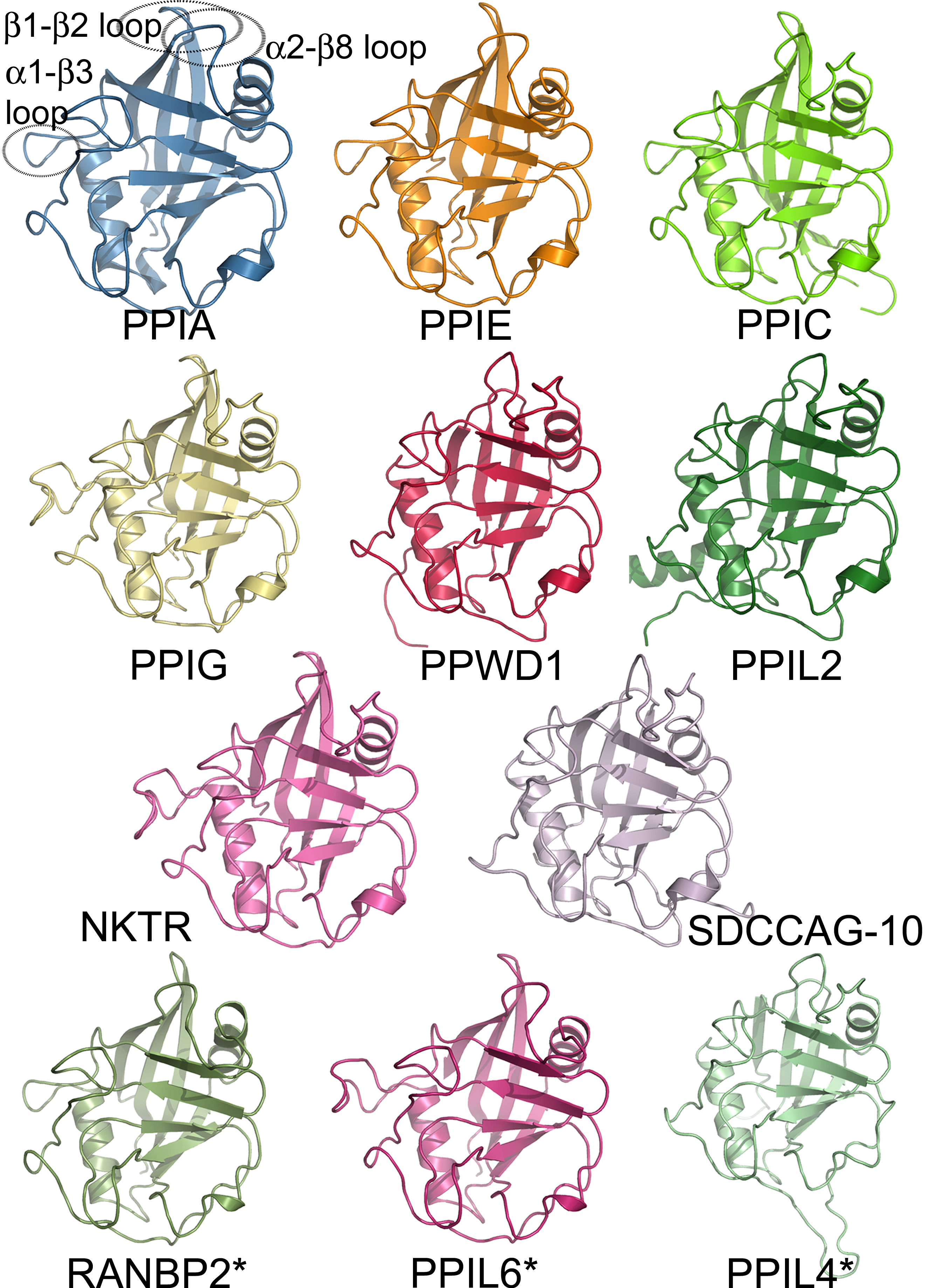|
Isocitrate Lyase Family
Isocitrate lyase family is a family of evolutionarily related proteins. Isocitrate lyase () is an enzyme that catalyzes the conversion of isocitrate to succinate and glyoxylate. This is the first step in the glyoxylate bypass, an alternative to the tricarboxylic acid cycle in bacteria, fungi and plants. A cysteine, a histidine and a glutamate or aspartate have been found to be important for the enzyme's catalytic activity. Only one cysteine residue is conserved between the sequences of the fungal, plant and bacterial enzymes; it is located in the middle of a conserved hexapeptide. Other enzymes also belong to this family including carboxyvinyl-carboxyphosphonate phosphorylmutase () which catalyses the conversion of 1-carboxyvinyl carboxyphosphonate to 3-(hydrohydroxyphosphoryl) pyruvate carbon dioxide, and phosphoenolpyruvate mutase (), which is involved in the biosynthesis of phosphinothricin tripeptide antibiotics. Subfamilies *Isocitrate lyase *Methylisocitrate lyase *C ... [...More Info...] [...Related Items...] OR: [Wikipedia] [Google] [Baidu] |
Protein Family
A protein family is a group of evolutionarily related proteins. In many cases, a protein family has a corresponding gene family, in which each gene encodes a corresponding protein with a 1:1 relationship. The term "protein family" should not be confused with family as it is used in taxonomy. Proteins in a family descend from a common ancestor and typically have similar three-dimensional structures, functions, and significant sequence similarity. The most important of these is sequence similarity (usually amino-acid sequence), since it is the strictest indicator of homology and therefore the clearest indicator of common ancestry. A fairly well developed framework exists for evaluating the significance of similarity between a group of sequences using sequence alignment methods. Proteins that do not share a common ancestor are very unlikely to show statistically significant sequence similarity, making sequence alignment a powerful tool for identifying the members of protein families ... [...More Info...] [...Related Items...] OR: [Wikipedia] [Google] [Baidu] |
Isocitrate Lyase
Isocitrate lyase (), or ICL, is an enzyme in the glyoxylate cycle that catalyzes the cleavage of isocitrate to succinate and glyoxylate. Together with malate synthase, it bypasses the two decarboxylation steps of the tricarboxylic acid cycle (TCA cycle) and is used by bacteria, fungi, and plants. The systematic name of this enzyme class is isocitrate glyoxylate-lyase (succinate-forming). Other names in common use include isocitrase, isocitritase, isocitratase, threo-Ds-isocitrate glyoxylate-lyase, and isocitrate glyoxylate-lyase. This enzyme participates in glyoxylate and dicarboxylate metabolism. Mechanism This enzyme belongs to the family of lyases, specifically the oxo-acid-lyases, which cleave carbon-carbon bonds. Other enzymes also belong to this family including carboxyvinyl-carboxyphosphonate phosphorylmutase () which catalyses the conversion of 1-carboxyvinyl carboxyphosphonate to 3-(hydrohydroxyphosphoryl) pyruvate carbon dioxide, and phosphoenolpyruvate mutase ( ... [...More Info...] [...Related Items...] OR: [Wikipedia] [Google] [Baidu] |
Methylisocitrate Lyase
The enzyme methylisocitrate lyase () catalyzes the chemical reaction :(2''S'',3''R'')-3-hydroxybutane-1,2,3-tricarboxylate \rightleftharpoons pyruvate + succinate The reaction is similar to that of isocitrate lyase, except that an additional methyl group (marked with an asterisk in the above scheme) is present, meaning that citrate is replaced by methylcitrate and glyoxylate by pyruvate. In fact, in some bacteria such as ''Mycobacterium tuberculosis'', isocitrate lyase actually plays the role of methylisocitrate lyase. This enzyme belongs to the family of lyases, specifically the oxo-acid-lyases, which cleave carbon-carbon bonds. The systematic name of this enzyme class is (2S,3R)-3-hydroxybutane-1,2,3-tricarboxylate pyruvate-lyase (succinate-forming). Other names in common use include 2-methylisocitrate lyase, MICL, and (2S,3R)-3-hydroxybutane-1,2,3-tricarboxylate pyruvate-lyase. This enzyme participates in propanoate metabolism. Methylisocitrate lyase was discovered in ... [...More Info...] [...Related Items...] OR: [Wikipedia] [Google] [Baidu] |
Carboxyvinyl-carboxyphosphonate Phosphorylmutase
In enzymology, a carboxyvinyl-carboxyphosphonate phosphorylmutase () is an enzyme that catalyzes the chemical reaction :1-carboxyvinyl carboxyphosphonate \rightleftharpoons 3-(hydrohydroxyphosphoryl)pyruvate + CO2 Hence, this enzyme has one substrate, 1-carboxyvinyl carboxyphosphonate, and two products, 3-(hydrohydroxyphosphoryl)pyruvate and CO2. This enzyme belongs to the family of transferases, specifically those transferring non-standard substituted phosphate groups. The systematic name of this enzyme class is 1-carboxyvinyl carboxyphosphonate phosphorylmutase (decarboxylating). Structural studies As of late 2007, only one structure A structure is an arrangement and organization of interrelated elements in a material object or system, or the object or system so organized. Material structures include man-made objects such as buildings and machines and natural objects such as ... has been solved for this class of enzymes, with the PDB accession code . References ... [...More Info...] [...Related Items...] OR: [Wikipedia] [Google] [Baidu] |
Protein Domains
In molecular biology, a protein domain is a region of a protein's polypeptide chain that is self-stabilizing and that folds independently from the rest. Each domain forms a compact folded three-dimensional structure. Many proteins consist of several domains, and a domain may appear in a variety of different proteins. Molecular evolution uses domains as building blocks and these may be recombined in different arrangements to create proteins with different functions. In general, domains vary in length from between about 50 amino acids up to 250 amino acids in length. The shortest domains, such as zinc fingers, are stabilized by metal ions or disulfide bridges. Domains often form functional units, such as the calcium-binding EF hand domain of calmodulin. Because they are independently stable, domains can be "swapped" by genetic engineering between one protein and another to make chimeric proteins. Background The concept of the domain was first proposed in 1973 by Wetlaufer aft ... [...More Info...] [...Related Items...] OR: [Wikipedia] [Google] [Baidu] |


